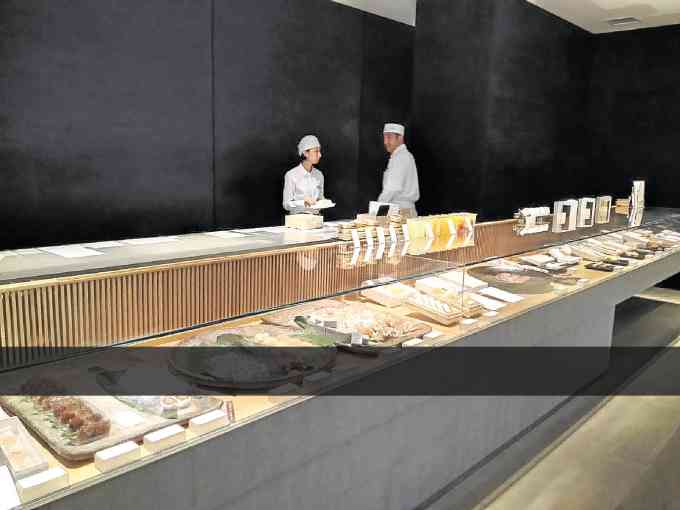In mid-September, the weather in Fukuoka, Japan, was humid and rainy. It was like Manila, with scores of Korean tourists dragging their wheelie bags down the streets and through the underground shopping arcade at JR (Japan Railways) Hakata Station, the city’s major hub.
Japan’s fifth largest city, Fukuoka is located 1,100 kilometers from Tokyo. Busan in South Korea is closer to Fukuoka; ferries ply the route regularly.
The capital city of Fukuoka prefecture welcomes over two million foreign visitors annually with the bulk coming from South Korea and China.
We encountered a few fellow Filipinos during a trip to cover the awarding of the 2016 Fukuoka Prize, whose aim is the promotion and understanding of unique cultures in Asia.
Filipino historian and Inquirer columnist Ambeth Ocampo was one of this year’s Fukuoka Prize awardees; he shared the stage with fellow winners, Indian composer A. R. Rahman and Pakistani architect Yasmeen Lari.
If you have a couple of days to spend in Fukuoka, walk around, see the sights, shop a bit (or a lot), but don’t leave without eating the ramen.
We were lucky to be there for the thousand-year-old Hojoya Festival (Sept. 12-18), an autumn feast for the blessings of nature. It’s considered one of Hakata’s three large festivals, drawing a million visitors every year.
The 1-km approach to the Hakozaki Shrine is lined with over 500 stalls selling food like grilled squid and octopus balls (takoyaki), glass toys (Hakata chanpon) and new ginger (shin-shoga) traditionally sold with the stalks still attached.
Buddhist shrines
You may have missed this year’s Hojoya but throughout Fukuoka there are Buddhist shrines open to the public. Tochoji Temple is located 10 minutes away on foot from Hakata Station.
It’s pretty hard to miss with its five-story vermilion pagoda. Inside you will find the Great Buddha of Fukuoka, Japan’s largest seated wooden statue of Buddha.
Japanese gardens are always a delight to behold, whether wide and expansive like Ohori Park, or small and intimate like Rakusui-en, which also houses a restored tearoom.
After you’ve walked around the Rakusui-en garden that includes a pond and a small waterfall with natural rocks, you can enjoy matcha tea at one of the property’s three tatami rooms.
Before exiting, note the textured external mud walls (hakatabei) that were fortified with burnt stones and roof tiles salvaged after World War II.
If the forecast is rain, consider spending an hour or two at the Fukuoka Asian Art Museum (3-1 Shimokawabatamachi, Hakata Ward, Fukuoka; https://faam.city.fukuoka.lg.jp).
The museum located on the upper floors of Riverain Center Building houses a range of Asian art pieces, including a large-scale painting, part of a triptych by Filipino National Artist Carlos “Botong” Francisco.
A new exhibit on Philippine art, “Time Travel through Art: History of the Philippines,” recently opened and runs until Dec. 25.
Make your own sushi
SUiTO Fukuoka is the city’s tourist information office that also houses a restaurant with an affable Japanese chef who can teach how to make sushi to as many as eight tourists at a time (for a fee).
Also offered are other short “cultural experiences” like a quick kimono dress-up, takoyaki making and sake tasting.
If you’re raring to show your artistic side, sign up for a calligraphy class where participants practice their brushstrokes on a
T-shirt they can keep for themselves or give as a gift. Reservations are required ([email protected]).
Tenjin and Hakata are the city’s known shopping areas; the choices at the latter are more varied and affordable.
Daiso, the popular 100-yen store, has a sprawling branch on the fifth floor of the Hakata Bus Terminal building. The merchandise is nicely displayed and not cramped at all.
There’s Tokyu Hands and Muji in the next building where you can stock up on pens, paper and whatnot.
Ramen experience
I was told I couldn’t leave Fukuoka without eating at Ichiran Ramen. Fortunately there’s a branch at the basement of Fukuoka Bank building across Hakata Station.
This ramen chain was founded in Fukuoka and now has branches all over Tokyo as well as in Hong Kong and Taiwan.
After paying, customers are led to their cubicles where they fill in a sheet to indicate whether they want firm or soft noodles, spring onions, fresh garlic or a soft-cooked egg to go with their tonkotsu (bone broth) ramen.
When your bowl is finally set in front of you, slurp, sip but save some soup. You can order extra noodles to add to that deliciously flavorful broth.
With the daily flights to Fukuoka on flag carrier Philippine Airlines and low cost carrier Cebu Pacific, Filipinos can now see more of Japan.
Japanese Garden Rakusuien (tel. 092-2626665), 2-10-7 Sumiyoshi, Hakata-ku, Fukuoka City, Fukuoka.
Fukuoka Asian Art Museum (tel. 092-2631105), Riverain Center Building, 3-1 Shimokawabata-machi, Hakata-ku, Fukuoka City.
SUiTO Fukuoka (tel. 092-7211055), Fukuoka-ken, Fukuoka-shi, Chuo-ku, Imaizumi 1-2-29.









































